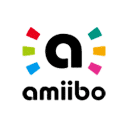
Summary:
Hollow Knight: Silksong showing up at a 20 dollar price point surprised a lot of people who had already decided in their heads that this follow up would land much higher. After years of anticipation, countless wishlists, and a far bigger adventure on offer, many expected a sticker closer to modern premium releases. Instead, Team Cherry stuck to a philosophy that puts players first, keeping the price low while the scale and ambition of the project grew. Co lead Ari Gibson has talked about wanting to keep prices reasonable, even as the team has a habit of letting projects expand until they clearly belong in the spotlight as full standalone releases. That mix of generosity and self awareness is part of what makes Silksong so interesting. We look at why the price feels like such a bargain, how it connects to the studio’s history, what it means for players, and what sort of signal it sends inside a market where many games now ask three times as much.
Why Hollow Knight: Silksong’s 20 dollar price caught so many players off guard
When the confirmation landed that Hollow Knight: Silksong would launch at around 20 dollars in the major regions, a lot of players had to read it twice just to make sure they had not missed a digit somewhere. For years, social feeds and forums had treated Silksong as one of the defining releases of this generation of side scrolling adventures, the kind of sequel that could easily command a premium tag without scaring away its most dedicated followers. Instead, the number looked more like a mid tier impulse purchase, the sort of thing you grab during a quiet month on the calendar. That contrast between expectation and reality amplified the reaction. People knew Silksong had taken a long time, that it had grown well beyond the original idea, and that the first Hollow Knight had become a phenomenon. Seeing such a modest figure attached to all of that history felt almost unreal, and that is why the price itself became a story.
How the first Hollow Knight shaped our sense of value
The original Hollow Knight quietly rewired what many players thought a 2D adventure could offer for a relatively small investment. It arrived at a low price, yet packed in a labyrinth of zones, bosses, secrets, charms and optional encounters that many people would have happily paid much more for. Over time, word of mouth and glowing reviews turned that initial impression into a kind of legend. Fans kept telling friends that this gloomy, hand drawn world was one of the best deals they had ever picked up on any platform. When a studio builds that kind of reputation, it does more than sell copies. It changes the baseline assumption people carry into the next release. So when Silksong finally reappeared after years of quiet work, most players were already expecting a bigger journey, a higher level of polish and, naturally, a higher price that matched those upgrades. The fact that the team did not lean on that goodwill to charge more is part of what makes the current situation so fascinating.
From planned add on to full sequel and the impact on pricing
Silksong did not start life as a clean slate sequel. For a long stretch, it was framed as an expansion starring Hornet, a way to revisit the world of Hollow Knight from a different angle. As development continued, the project kept pulling in new ideas, enemies, locations and systems until it outgrew that label entirely. At some point the team accepted that this was no longer an extra chapter perched on the side of the original. It was its own world and deserved to stand alone. With that shift came a natural question about how to position it for release. Many studios would have used that turning point to reframe the whole project around a higher price and a flashier marketing push. Team Cherry instead treated the move from add on to sequel as a creative decision, not an excuse to jump into a different pricing bracket. The price landed where it did because the team wanted it to feel fair first and foremost, even if the scale now lines up with games that usually ask for a lot more.
Team Cherry’s philosophy on fair pricing and perceived value
Listening to the way Ari Gibson talks about money, scope and value, you get the feeling that price is treated as a promise to players rather than just another lever in a spreadsheet. The studio benefitted hugely from the success of the first Hollow Knight, which sold millions of copies across several platforms and gave the team far more breathing room than most small outfits ever see. Instead of treating that success as a reason to chase higher and higher price points, they used it as freedom to keep things approachable. The 20 dollar figure for Silksong feels like a continuation of that mindset. It suggests that the studio wants as many people as possible to take a chance on Hornet’s journey, rather than framing this follow up as a luxury purchase. That does not mean they undervalue their own work. If anything, it suggests confidence that the experience itself will make people feel they got more than they paid for, and that long term trust is worth more than a short term bump.
What Ari Gibson’s comments reveal about the studio mindset
In a recent paperback from ACMI focused on Hollow Knight: Silksong, Ari Gibson described the team’s habit of keeping prices at a level that feels reasonable for most players, even as their projects keep expanding. He spoke about how the team tends to grow ideas until the scale clearly justifies treating each project as its own full release, rather than trimming back to match an initial plan. That observation says a lot. It shows that Team Cherry understands it has a tendency to pour extra work into every corner, yet does not immediately pair that habit with a higher charge at the store page. Instead, they see that expansion as part of the studio’s identity. Pricing then becomes a separate decision that revolves around accessibility and respect. The quote also hints at an awareness that value is something players feel, not just something that can be quantified. When someone spends 20 dollars and walks away feeling like they got a huge journey, that feeling lingers for years and colors how they approach anything the studio touches next.
Small team, long development and choosing not to charge more
Seven years is a long time to spend on any creative project, especially for a small group that could have moved on to something entirely new or switched to contract work in the middle. During that span, budgets in the wider industry ballooned, average prices rose, and a steady drumbeat of 70 dollar releases became the norm at the top end of the market. Against that backdrop, a team with a highly anticipated sequel could easily justify setting a higher price on grounds of time alone. Yet Team Cherry’s decision suggests that they look at development length and team size through a different lens. They know that the success of the first game gave them a cushion. They likely know that strong word of mouth and the sheer number of people eager to play Silksong will make up for the lower sticker price. By holding the line at 20 dollars, they show that they are more interested in building a long running relationship with players than squeezing every possible coin out of the most excited fans on day one.
How Silksong’s price compares to premium releases in today’s market
To really appreciate the 20 dollar figure, it helps to line it up against the rest of the current landscape. Many new games on major consoles now launch at around 70 dollars, with special editions stretching well above that. Even in the indie space, projects with far smaller ambitions than Silksong often arrive in the 30 to 40 dollar range. Throw in deluxe upgrades, season passes and early access bundles, and it is easy to feel like the baseline cost of staying current has drifted upward. Silksong cuts across that pattern. It offers handcrafted areas, intricate combat, a large roster of bosses and a long campaign at a price that undercuts not just big budget rivals, but a lot of peers in its own weight class. That is why you see comments online from players who say they almost feel guilty paying so little, or from observers who worry that such a generous tag could set unrealistic expectations for other studios. Whether or not those fears come true, the comparison makes it clear just how unusual this situation is.
What Silksong’s 20 dollar price means for players right now
For players, the immediate effect of this pricing choice is simple and very welcome. It dramatically lowers the barrier to entry for one of the most anticipated adventures of the decade. Someone who is curious about Silksong but juggling bills, rent and other hobbies no longer has to weigh a 70 dollar purchase against everything else going on. That alone changes who feels able to step into the world on launch week. It also shifts how people talk about the game among friends. Instead of needing to convince someone to invest a big chunk of their entertainment budget, fans can say, with a straight face, that this is a relatively small spend for a huge payoff. That kind of word of mouth is gold, and it feeds directly back into the studio’s decision. By making the price generous, Team Cherry effectively recruits every satisfied player as a quiet ambassador who can recommend the game without worrying about pushing something that feels expensive.
Lower barriers for new fans discovering Hollow Knight and Silksong
Not everyone who looks at Silksong has already cleared every secret room in the first Hollow Knight. Some people bounced off the original because of timing, difficulty, or simply because there are only so many hours in a day. Others may have watched from the sidelines and never quite found the moment to jump in. A 20 dollar sequel changes the picture for that whole group. It lets newcomers treat Silksong as their entry point into the universe, a way to meet Hornet and explore a new kingdom without feeling like they need to study the entire history of the franchise first. If they enjoy it, the older game is still there waiting, often heavily discounted. Together, that pairing creates a path where someone can get hundreds of hours of moody exploration and tight platforming for less than the price of one premium release elsewhere. For anyone who loves this style of play but has to watch their spending, that combination is incredibly attractive.
Trust, goodwill and how pricing shapes a studio’s reputation
Price is not just a number on a store page. It is also a signal that tells people what kind of relationship a studio wants with its audience. When players see a small team hold the line at a low price despite years of hype and demand, it sends a message that goes beyond marketing slogans. It says that the studio remembers what it feels like to be on the other side of the checkout button, counting every purchase and wondering if a given game will really earn its place on the shelf. Over time, that attitude builds trust. Players become more willing to buy on day one, to recommend new releases to friends, and to give the benefit of the doubt when delays or quiet periods happen. That kind of goodwill cannot be bought with ads alone. It has to be earned through choices that put players first, and Silksong’s 20 dollar price is one of the clearest examples we have seen of that logic in action.
Ways players can support Team Cherry beyond the base purchase
The funny thing about a generous price is that it often inspires people to give more rather than less. Once players feel that they have already received excellent value, they start looking for ways to show appreciation beyond the initial purchase. In Silksong’s case, that might mean picking up the game on more than one platform, buying soundtracks or physical goodies tied to the world, gifting copies to friends who love this style of adventure, or simply leaving detailed recommendations and reviews that help others discover it. None of those gestures are required, and the studio clearly set the price so that even a single purchase would feel worthwhile on its own. Still, having those options matters. They give fans a way to match their support to their own budget and enthusiasm, and they help close the loop between a studio that chooses to be fair on price and a community that chooses to respond with real loyalty.
What Silksong’s pricing says about the wider games industry
Zooming out, Silksong’s 20 dollar tag sits at the crossroads of several ongoing conversations about how games are valued, who gets to play them, and what responsibilities studios have once they find success. On one side, you have a wave of big releases that argue, implicitly or explicitly, that rising development costs justify ever higher prices, more aggressive monetisation and a constant push toward live service models. On the other, you have smaller teams like Team Cherry demonstrating that there is still room for a different approach. Their choice does not magically fix every structural issue in the industry. It does, however, provide a sharp counter example. It shows that a small group armed with a strong idea, careful spending and a patient schedule can launch a huge adventure at a price that feels inviting rather than intimidating. Whether other studios follow that path is an open question, but at the very least, Silksong proves that players will notice and celebrate when a team chooses generosity over short term gains.
Conclusion
Silksong’s 20 dollar price is not a marketing trick or a quirky accident. It is the visible result of a philosophy that has been building inside Team Cherry since the first Hollow Knight started winning fans. The studio lets ideas grow, treats each new project as a full journey once it earns that status, and then prices the finished work at a level that feels kind to players rather than exploitative. That approach stands out in a market crowded with expensive releases and layered business models. For players, it means a lower barrier to one of the most talked about adventures of the decade, and for the team, it means deeper trust from a community that feels respected rather than squeezed. As long as that cycle continues, every new visit to this strange, beautiful world will feel like more than just a purchase. It will feel like a shared decision to keep valuing generosity, craft and heart over raw numbers.
FAQs
- Why is Hollow Knight: Silksong priced at only 20 dollars?
- Team Cherry has said that it aims to keep its games at a level that feels reasonable for most players. The studio’s success with the first Hollow Knight gives it enough breathing room to hold the line at a lower price, even though Silksong is larger and took many years to create. Keeping the price modest makes the adventure accessible to more people and builds long term trust rather than chasing a short term spike in revenue.
- Is Hollow Knight: Silksong worth it if I never played the original Hollow Knight?
- Silksong is designed so that new players can jump in and enjoy Hornet’s journey without having to clear the first game. You will miss a few references and connections, but the core story, movement and combat stand on their own. If you end up loving this world, you can always circle back to the earlier adventure later, often at a discount, which makes the pairing a strong deal for anyone who likes this style of game.
- How does Silksong’s price compare to other games releasing now?
- Many new console releases sit around 70 dollars, and even smaller projects often charge 30 dollars or more. Against that backdrop, a 20 dollar price for a large, handcrafted adventure like Silksong feels very generous. You are paying less than a third of what some premium releases ask for, while still getting a long, tightly designed experience that can easily keep you busy for dozens of hours or more, depending on how thoroughly you explore.
- Does the low price mean Silksong is a shorter or lighter experience?
- All signs point in the opposite direction. The team has talked about Silksong growing well beyond its original scope as an add on, with a big world, many bosses and a long campaign. The lower price does not signal a cut down journey. Instead, it reflects a deliberate choice to prioritise fairness and accessibility. Players familiar with the first Hollow Knight already know that this studio has a habit of offering more than people expect for the price they pay.
- How can I show support for Team Cherry beyond buying Silksong once?
- If you feel you are getting great value at 20 dollars and want to go further, there are several options. You can grab the game on another platform you use, pick up soundtracks or physical goodies if they are available in your region, or gift a copy to a friend who loves this type of adventure. Leaving thoughtful recommendations and sharing your experiences also helps a lot, because it pushes more curious players to take the same low risk step into Hornet’s world.
Sources
- Team Cherry Says Hollow Knight Silksong Pricing Was Simply “Reasonable”, My Nintendo News, November 23, 2025
- Team Cherry Confirms Hollow Knight: Silksong Will Cost $19.99, 80 Level, September 1, 2025
- Hollow Knight: Silksong Price Is $20, Team Cherry Confirms, GamesRadar, September 1, 2025
- Silksong Is Only $19.99, The Verge, September 1, 2025
- Team Cherry Confirms Silksong Price And Launch Times, PC Gamer, September 1, 2025
- Team Cherry Maakt Prijs Van Hollow Knight: Silksong Bekend, Tweakers, September 1, 2025














